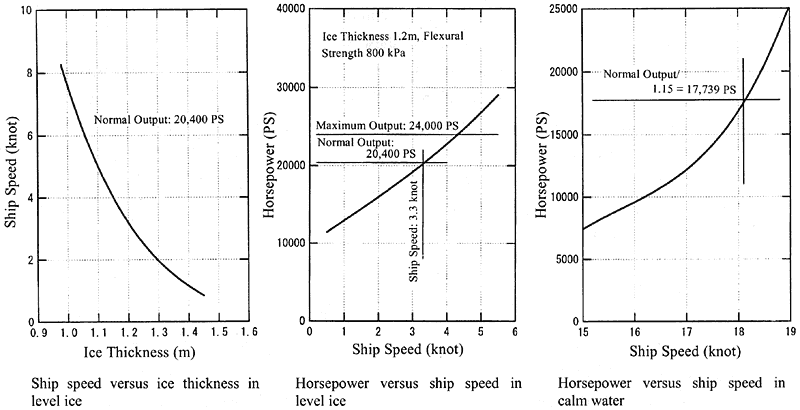In contrast, the hull form C-a did well in the evaluation of performance in open water, but its poor performance in ice led to a low overall evaluation score.
Table B-5 Evaluations of hull forms

Based on the results in Table B-5, Dr-d was determined to be the optimum design for an icebreaking cargo ship operating under the anticipated conditions of NSR coastal navigation; its performance in ice and open water are summarized in Figure B-15. Assuming 85% of the maximum output of 24,000HP as the normal and 15% as the sea margin, the finally designed vessel was estimated to reach speeds of 18.1 knots in open water. In level ice, again with 85% of maximum output, the vessel was estimated to be capable of continuous icebreaking in 1.2m-thick ice, at a speed of 3.3 knots.

Figure B-15 Performance of the optimum ship for coastal NSR navigation
2. Development of Icebreaking Cargo Ship for the NSR Northerly Route
As with the effort to develop a coastal NSR commercial vessel as described above, the development of an icebreaking cargo ship in deep water for the northerly route of the NSR proceeded in order through the phases of basic planning, tank testing and evaluation of results. Because this research had to be completed within a relatively short span of time in coordination with INSROP, however, the comparison and examination of the performance of each ship type in tank tests was excluded. Instead, the performance data from the various shallow-water designs developed in Phase I were used in the design of the deep-draft ship.
BACK CONTENTS NEXT